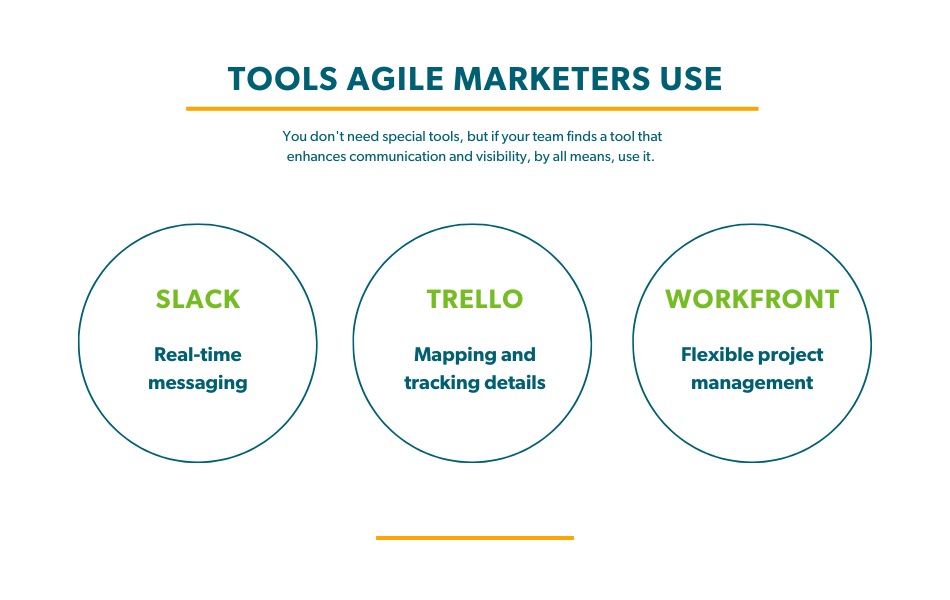-
- marketing agility
- Teams
- Organizations
- Education
- enterprise
- Articles
- Individuals
- Transformation
- Solution
- Leadership
- Getting Started
- business agility
- agile management
- going agile
- Frameworks
- agile mindset
- Agile Marketing Tools
- agile marketing journey
- Agile Marketers
- organizational alignment
- People
- Selection
- (Featured Posts)
- agile journey
- Metrics and Data
- Kanban
- strategy
- Resources
- Why Agile Marketing
- agile project management
- self-managing team
- Meetings
- agile adoption
- scaled agile marketing
- tactics
- Scrum
- scaled agile
- agile marketing training
- agile takeaways
- Agile Meetings
- agile coach
- Agile Leadership
- Scrumban
- enterprise marketing agility
- state of agile marketing
- team empowerment
- agile marketing mindset
- agile marketing planning
- agile plan
- AI
- Individual
- Intermediate
- Team
- Videos
- kanban board
- Agile Marketing Terms
- agile marketing
- agile transformation
- traditional marketing
- FAQ
- agile teams
- Agile Marketing Glossary
- CoE
- agile
- agile marketer
- agile marketing case study
- agile marketing coaching
- agile marketing leaders
- agile marketing methodologies
- agile marketing metrics
- agile pilot
- agile sales
- agile team
- agile work breakdown
- cycle time
- employee satisfaction
- marketing value stream
- marketing-analytics
- remote teams
- sprints
- throughput
- work breakdown structure
- News
- Scrumban
- agile brand
- agile marketing books
- agile marketing pilot
- agile marketing transformation
- agile review process
- agile team charter
- cost of delay
- hybrid framework
- pdca
- remote working
- scrum master
- stable agile teams
- startups
- team charter
- team morale
- user story
- value stream mapping
- visual workflow

This article was originally published in 2017 and last updated in October 2022
In his iconic book Moneyball, Michael Lewis recounts how the management of the Oakland Athletics revolutionized baseball by relying on statistical analyses rather than intuition to choose new players. Before General Manager Billy Beane turned a single metric – on-base plus slugging (OPS) – into his North Star for every recruiting decision, team managers preferred strategies that were unlikely to fail rather than those that seemed most efficient. “The pain of looking bad,” Lewis writes, “is worse than the gain of making the best move.”
As a former content marketing manager that was tasked with delivering my quota of MQLs (marketing-qualified leads) and hitting publication dates, I get it. Picking an approach that seems unlikely to fail is a safe choice. Proposing a radical new management system seems not only risky but foolhardy. “Why,” managers the world over ask every day, “should we try to fix something that isn’t broken?”
Unfortunately for status-quo fans everywhere, visionaries and innovators understand that what counts as “broken” is constantly in flux. Before Beane began his quiet revolution inside Major League Baseball, no other team’s decision-making style had seemed ineffective. Yet Oakland would soon overtake them because its success depended on breaking with the past.
Likewise, in the increasingly noisy and densely populated online world, the success of our content relies on our teams’ ability to break things. We have to break through to audiences underwhelmed by mediocre marketing. We have to break the habits of consumers who have always used a competing product or read a competitor’s newsletter. And, most importantly, we have to break the way we manage and structure our content teams.
Although, really, it’s just the last part, the management part, that we have to break – and by break, I mean teams must decide on their own structure without heavy-handed interference from management.
Before the accusations of marketing treason (or at the very least management communism) begin to fly, let me be clear: I’m not advocating the dissolution of management altogether. I’m proposing that on a modern content marketing team (whose goals, obstacles, and workloads are typically so overwhelming that it’s a wonder they don’t all sleep under their desks), a manager’s job is to hire amazing people, empower them using Agile principles and processes, and then work like hell to keep anyone else from interfering.
That’s still a lot to accomplish, so let’s start from the top.
“Agile” marketing teams? What’s that?
Some teams are naturally adaptive and data-driven and could technically be considered agile (lowercase “a”). To qualify as Agile (capital “A”), a marketing team needs a process-management structure that enables it to adapt and iterate on an ongoing basis – not just when the pressure’s on to right the things that have started to go wrong.
This structure could take various forms, including Scrum (the classic Agile process based around sprints), Kanban (a pull-based system that uses work-in-progress limits), or a hybrid of the team’s own invention.
Most Agile teams work in sprints – set periods during which team members focus on completing a set amount of work that’s connected to a long-term plan. Each sprint lasts between one week and one month, with two weeks being the most common duration.
A mainstay of the Agile approach is the standup – a 15-minute meeting, usually held at the beginning of every workday, during which team members stay on their feet. They take turns updating everyone on what they did yesterday, what they plan to do today, and what obstacles they need help to overcome.
Whatever form your chosen structure takes, some kind of systematic foundation is needed to keep an Agile team from descending into frenetic reactions or dissociating from the long-term plan.
Changing your mind all the time does not make you Agile. But changing the way you systematically transform those micro mind shifts into more productive and successful content development practices will.

Know Your Agile Terms
Agile iteration: A set length of time during which a team commits to producing a set amount of content. Sometimes called a sprint.
Backlog: A prioritized to-do list that serves as the source of all work done by an Agile team. New requests get added to the backlog as they come in, and during their sprint planning meetings, the team decides which tasks to pull from the list and prioritize in their schedule.
Daily standup: A 15-minute daily meeting during which team members discuss what they did yesterday, what they plan to do today, and any blocks holding them back.
Sprints: A set period of time during which team members focus on completing a set amount of work that’s connected to a long-term plan.
Work-in-progress (WIP) limit: An inflexible limit on how much content can be in any given state (e.g., research, writing, editing, review) at one time.
4 Steps for Agile Content Development
Step 1: Hire amazing people
Finding the right content help for your business is never an easy endeavor. But the interviews, networking, and early morning coffee meetings more than pay off when you consider the impact that truly passionate and skilled content creators will have on your organization.
In an interconnected digital world, great marketing can spread at the speed of a click. It doesn’t matter if it came from a team with a multimillion-dollar budget or a solopreneur doing it all on her own. The internet is nothing if not democratic.
That means finding – and retaining – creators who can consistently produce legitimately awesome work that gives you a regular shot at hitting the digital jackpot. There is no greater source of competitive advantage in content marketing than a talented team.
But if you don’t want the legitimately awesome to rapidly devolve into lethargic and yawn-inducing, those teams need the space, freedom, and focus to create intelligently.
Step 2: Empower teams with agility
Whether it’s managed through a formal iteration/sprint process (set length of time during which a team commits to producing a set amount of content) or simply by setting work-in-progress caps (inflexible limits on how much content can be in any given production stage – such as research, writing, editing, or review – at one time), Agile teams are best governed by placing restrictions on the volume of their workflow.
This isn’t because they’re lazy or can’t handle the workload. It’s because when people have to split their focus in too many directions, their work quality can suffer and their projects can take longer to complete.
For example, let’s imagine that your current content plans include creating a new webinar, whose launch you will support with an e-book and a series of blog posts. You plan each piece, make assignments, and send the team off to work. A week passes and you check on progress. It turns out that one person got derailed when sales asked for lead-generation collateral, another lost a day responding to angry customer tweets, and your CEO wanted a home-page rewrite that took priority over the blog posts.
Now you’ve got three half-finished content items, which is like having none at all: You can’t give a webinar that ends abruptly halfway through. Nobody wants to download an e-book that’s just an outline. And blog posts just don’t work if they’re composed entirely of headlines, header tags, and target keywords.
An Agile content team, on the other hand, would have focused all their collaborative efforts on finishing the first piece before starting on other materials. Its members could have told sales and the CEO that their requests would be added to their content’s Agile backlog (a prioritized to-do list that serves as the source of all work done by the team), not to the top of the list of immediate to-do’s.
As a bonus, not only do Agile teams produce more content in less time, they also make team members happier and more engaged. And that means team members stick around longer, are easier to recruit, and help solve that thorny talent problem we talked about earlier.

Step 3: Get your team design right
Agile teams don’t work the same way regular marketing teams do. While you can make traditional single-function teams, like a team consisting of all content writers, when doing Agile content development, cross-functional teams are ideal. This is because traditional teams require far more handoffs: the writers send work to the editors who then send it to stakeholders for approval before sharing it with designers for images, and on and on.
In cross-functional teams, each one needs to be self-sufficient, containing all the people needed to take a piece of work from idea to delivery. As a result, when you’re planning, holding standups, or refining your backlog, you have input from every person you need to complete some work, ensuring they all have capacity and know what’s coming their way.
Of course, this requires upending some existing teams, but there are only 3 steps toward cross-functional Agile marketing teams, so it’s both doable and very worthwhile.
Step 4: Block others from getting in your team’s way
You might have expected me to close by telling you to get out of the way so your team can work their Agile magic, but that’s not the final step. On our hypothetical content team, we had external requests being thrown in from all sides and derailing our team’s progress on essential tasks. Even on an Agile team, not everybody will be comfortable rejecting an executive’s request, even if it will disrupt their workflow. Agile teams are empowered, but that doesn’t mean they have superpowers.
Managers need to act like an offensive line, getting in the way of people who are trying to disrupt their team while they’re executing a beautiful play. They attend daily standup meetings, listen attentively, and volunteer to help remove roadblocks (and then doing it). They genuinely value the creative force that their team can wield and they actively work to create a situation where it can do its thing.
Respect Tradition or Profit From it – It’s Your Choice
Marketing, like baseball, has ways it’s always been done. We can choose to adhere to traditional ways of managing and creating content, or we can look outside our own typical way of thinking to gain the upper hand. Your competitors are likely using an Agile approach to start breaking things at this very moment. Imagine the success you can achieve by doing the same.
Topics discussed

Andrea Fryrear is a co-founder of AgileSherpas and oversees training, coaching, and consulting efforts for enterprise Agile marketing transformations.
Improve your Marketing Ops every week
Subscribe to our blog to get insights sent directly to your inbox.



